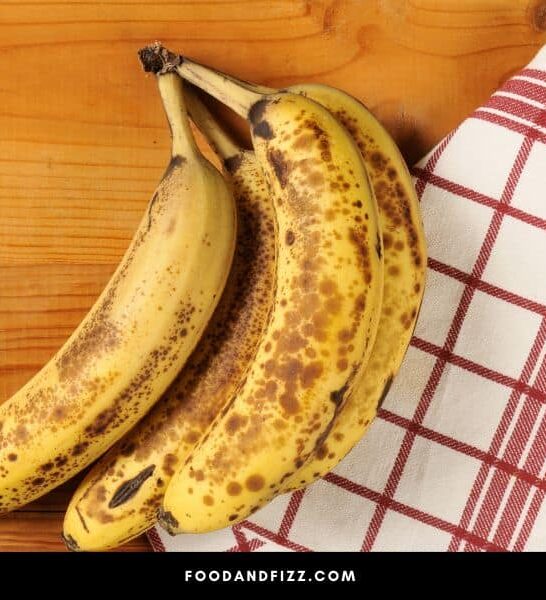Bananas naturally turn brown as they age or as they interact with their environment. These interactions cause the fruit to undergo chemical processes that change its appearance and taste.
Bananas that have turned brown may not look appetizing, but as long as there is no mold on them and it is not slimy, they are usually safe to eat.
In fact, some recipes actually benefit more from browning bananas than yellow ones, as brown bananas are softer and sweeter and impart natural moisture to recipes.
In this article, we’ll explore why bananas turn brown inside.
Why Are Bananas Brown Inside?
Bananas turn brown inside either due to the ripening action of a hormone called ethylene or due to the process of enzymatic browning caused by an enzyme called polyphenol oxidase. Enzymatic browning is when fruits and vegetables turn brown due to oxidation.
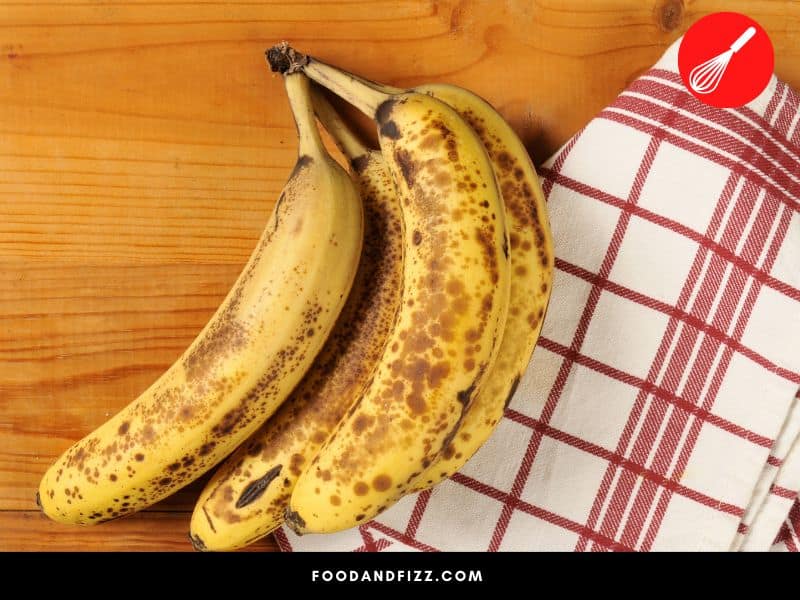
My Bananas Turned Brown. What Happened?
Finding out that your bananas have turned from bright yellow to an unappetizing brown color can be quite a disappointing discovery, especially if you were really looking forward to eating them today.
What happened to them, and what caused them to turn brown?
That Hormone Called Ethylene
If your bananas have turned brown on the inside, it is possibly caused by the action of an ethylene hormone.
Ethylene is an important hormone contained within plants that help regulate the ripening process of their fruits. When the plant decides that it is time to ripen, a kind of internal switch flips on that increases its production of ethylene and, in turn, induces fruit ripening.
Unripe fruit often contains low levels of ethylene, but when the internal switch is turned on, its concentration in the fruit increases, which then triggers increased sugar production, lower acid levels in the fruit, and release of aromatic compounds—basically all the necessary processes to make the fruit attractive and delicious and ripe.
These are jumpstarted by the increase in ethylene, and the amazing part about this is that this process is intuitive to the plant, and there is no real understanding as to when this switch turns on.
Ethylene causes starches or complex sugars to get broken down into simple sugars, and it helps break down the pectin in the bananas, which makes them soft in texture. It also induces the action of other processes, which turn the green pigments in the banana into yellow pigments, signaling ripeness.
Ethylene can be induced artificially, though, and is common practice with fruits that we normally find in the supermarket.
Because harvesting fully ripe fruits are not practical in that they get more easily damaged with transport and because they may become overripe or even spoil even before they even reach the supermarket shelves, it is much more practical for producers to harvest before fruits are fully ripe, and then control their ripening in a controlled setting by inducing artificial ethylene gas.
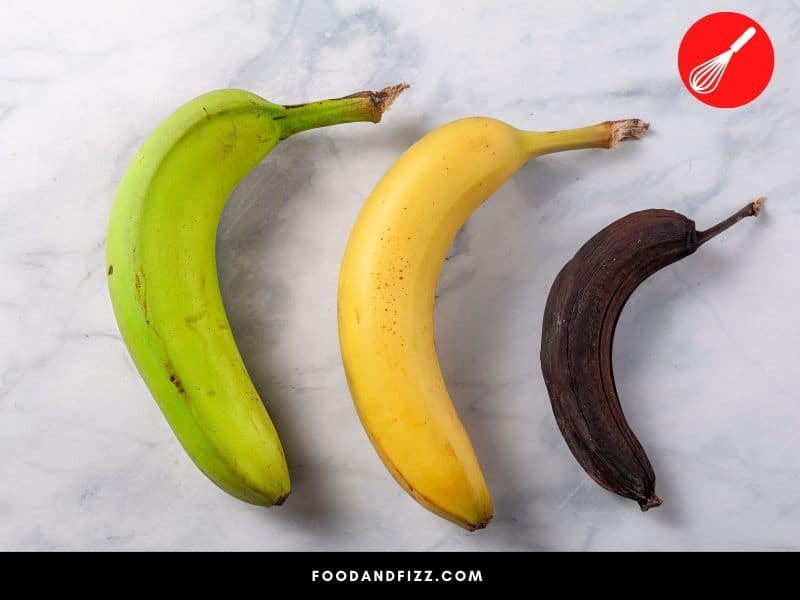
This is sometimes done with climacteric fruits like apples, bananas, pears, and peaches. Climacteric fruits, in general, are fruits that still ripen even after they are picked.
In contrast, non-climacteric fruits, like grapes, strawberries, and oranges, need to be attached to the parent plant to ripen and develop their full flavor fully. Exposure to ethylene gas post-harvest does little to ripen them.
Ethylene is the reason why putting a green or underripe banana inside a brown paper bag on the counter will cause it to ripen after a few days. Its exposure to its own ethylene gas via its stems hastens this ripening process.
This is also why, to slow down the ripening process, you should keep the stems of the banana covered to slow down the release of this gas and minimize the fruit’s exposure to it.
Fruit ripening essentially is also the start of fruit decaying. After the fruit has fully ripened—in bananas, they become aromatic, bright yellow, with a tender but firm texture, they will also start to deteriorate.
When they have commenced the deterioration process, the banana will start to become soft, change in appearance from yellow to brown and lose some of that sweet aroma that was present in its peak ripeness.
If your bananas are brown inside, it may be because they are overripe, jumpstarted by exposure to ethylene.
An Enzyme by the Name of PPO
If your banana is not overripe, yet it has turned brown inside, this may be due to the action of an enzyme called polyphenol oxidase, or PPO for short.
Polyphenol oxidase is an enzyme contained in fruits and vegetables that can trigger a process known as enzymatic browning.
Enzymatic browning, as the name suggests, is the browning of a fruit or vegetable’s flesh due to the action of enzymes. Enzymatic browning usually happens when a fruit or vegetable is cut, bruised or damaged or when they are subjected to stress in any way.
If you have ever cut apples or avocadoes and observed that they turned brown within minutes after cutting them, enzymatic browning is the reason.
In simple terms, what happens during this process is that when cells are damaged, the PPO that they contain gets released into the fruit’s system, and then it interacts with the other molecules it encounters. Combined with oxygen, this interaction causes them to form bonds that eventually form into compounds called quinones.
Quinones are highly reactive, and as they interact with oxygen and the other compounds in the fruit, they cause melanin production.
Melanin is what is responsible for turning fruits and vegetables a brown color in this process of enzymatic browning.
If it sounds familiar, it is because you have probably encountered the term before, as it is the same pigment that is responsible for the color of our hair, our skin, and our eyes. The more melanin present, the darker the brown pigment will be.
A banana that is brown on the inside may have been damaged or bruised, or stressed in any way, turning its flesh brown. A cut or peeled, or sliced banana will also exhibit the same type of browning.
Bananas that have been subjected to extreme cold or extreme heat may also exhibit browning as extreme temperature changes also cause damage to the cells, causing the release of PPO.
Enzymatic browning causes unwanted color changes in fruit that may impact its perception of freshness. They are safe to eat, though, but of course, visually, it can be unappealing.
Luckily, there are things you can do to prevent or at least slow down the browning of your banana.
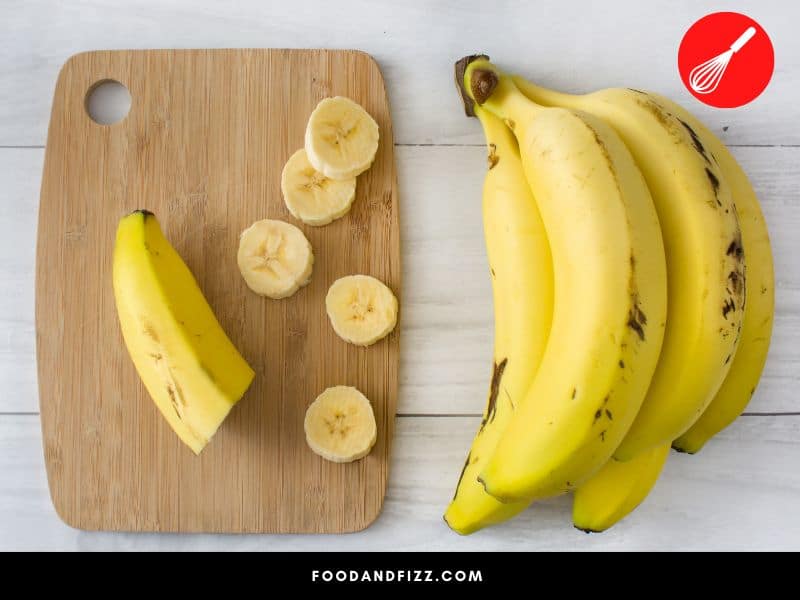
How Can I Avoid Brown Bananas?
To avoid encountering brown bananas, you may employ the following tips.
1. Go For Slightly Underripe Bananas
To avoid the problem of waking up to brown bananas very soon after buying them from the store, you can opt to purchase bananas that are still slightly green or underripe.
Because bananas are climacteric fruits or fruits that can ripen after harvest, they will continue to ripen on your counter.
Buying them slightly underripe will give you more time with them, especially if you plan on using your bananas for different purposes. Rather than going home with fully ripe bananas that are overripe the next day, going slightly green can be a great solution.

2. Keep Banana Stems Wrapped in Foil or Plastic Wrap
Bananas release ethylene gas through their stems, and keeping them wrapped in foil or plastic wrap will slow down this release and thus slow down its ripening. You may find that you have more yellow banana days before they inevitably turn brown.
3. Make Sure They Are Allowed To Breathe
Bananas need space to breathe, so remove them from their packaging when you get home, and do not keep them in a paper bag or plastic bag unless you want to make them turn brown faster.
Keeping them in a closed bag will concentrate the ethylene and hasten the ripening process.
4. Be Careful With Handling Your Bananas
As we said earlier, any form of damage will cause the cells to break down and release PPO and cause it to interact with phenolic compounds and oxygen that can turn produce brown.
To avoid this, be careful with handling your bananas and make sure they are not dropped or bruised or handled roughly as any type of stress can initiate this process.
5. Adding An Acid Like Lemon
Adding a spritz of lemon juice to your sliced bananas will slow down the natural browning process caused by enzymatic browning. The enzyme PPO does not work very well in acidic environments.
Introducing this acidity to your sliced bananas will considerably slow down the action of PPO and slow down the process of enzymatic browning.
According to Penn State Extension, while citric acid and lemon juice can help delay browning, it is not as effective as other anti-browning agents like ascorbic acid.
Can I Still Eat Bananas That Are Brown Inside?
In general, bananas that have turned brown on the inside are safe to consume. They might not be as appetizing as yellow-fleshed bananas, but they are safe to eat. The only downside is the browner it is, the sweeter it will be, and the mushier the texture is.
If you are iffy about the brown spots, though, you may also just opt to cut those parts away and consume the other parts as is.
Just make sure, though, that your banana is not slimy and does not have mold or any unusual things on its surface. If this is the case, best to throw it out.
After some point, those brown bananas might not be palatable to eat on their own anymore, and they are better suited for things like banana bread or banana muffins, any recipe that calls for mashed bananas like pancakes. The natural sweetness of the overripe bananas will make it unnecessary to add extra sugar.
I always make my banana bread with overripe bananas. I find that they just have more depth of flavor and they give the bread a more banana-like taste than using just-ripe bananas.
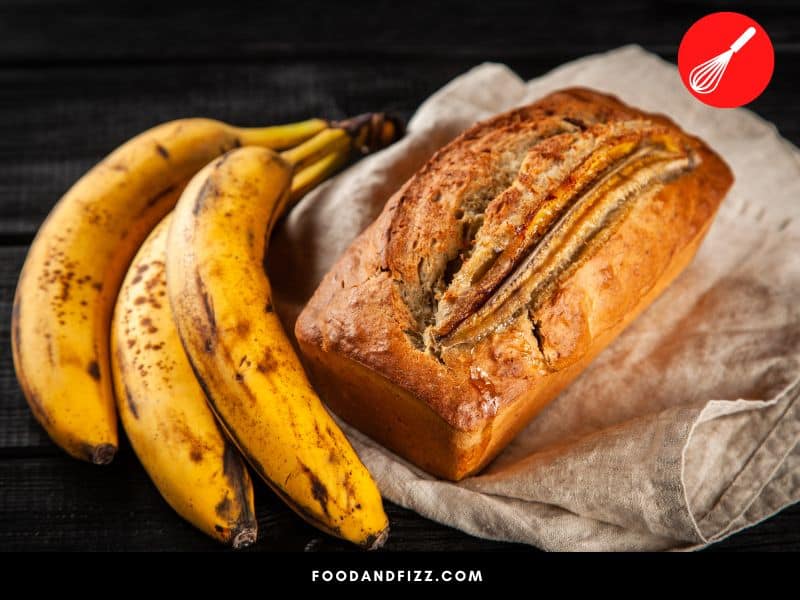
Frequently Asked Questions to Why Are Bananas Brown Inside?
Why Do Bananas Darken In the Fridge?
Bananas are tropical fruits and are not evolved to withstand cold temperatures. Placing them in the fridge can place stress on the cells and damage them, leading to browning or darkening.
Can You Eat A Brown Part of A Banana?
If it is due to the fruit being overripe or due to browning caused by the fruit’s enzymes, brown parts of bananas are safe to eat, although they may be mushy and may taste sweeter compared to the rest of the banana.
Conclusion to Why Are Bananas Brown Inside?
Bananas can turn brown due to a plant hormone called ethylene, which is what is responsible for inducing the ripening process, or due to an enzyme called polyphenol oxidase. Polyphenol oxidase, or PPO, triggers a chemical reaction known as enzymatic browning, which happens in response to damage or stress imparted on the fruit.
In both these cases, the bananas are safe to eat, although it is still important to check their appearance for mold or unusual growths and to check for off-smells and unusual textures to make sure the browning isn’t caused by pathogens.

